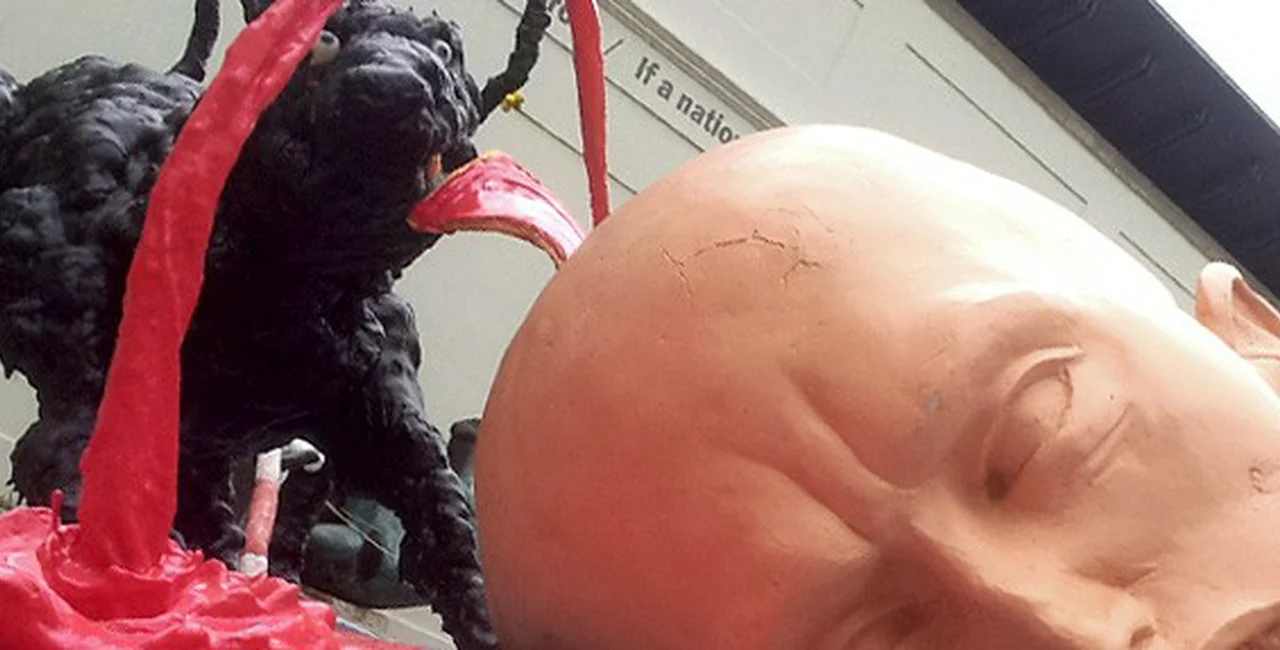If you walk past Museum Kampa this summer, you might be surprised to discover a graphic exhibit in the Museum’s courtyard, next to items from this year’s Sculpture Line festival and around the corner from some of David Černý’s Babies.
Reconstruction of a Tragedy and a Farce, by art group Pode Bal (Petr Motyčka and Dan Trantina) depicts a dog tearing flesh from a young man’s head, with a stream of blood pouring out and forming a pool. Two guard figures look on from a few meters away.
Earlier this year, the piece was displayed on the boardwalk outside the European Parliament in Brussels, where it sparked protests and was requested to be removed.
Vandals later destroyed one of the guards in the exhibit.
The display was organized by the Platform of European Memory and Conscience, who aimed to create works around the theme of crimes associated with the Iron Curtain and unpunished crimes against humanity committed by the Communist regime.
Unfortunately, the piece depicts a tragic real-life event in Czechoslovakia’s history.

In 1986, an eighteen-year old boy named Hartmut Tautz attempted to flee the country by cutting through a fence outside of Bratislava and running through a field to the Austrian border.
Two border guards, however, tracked him down and released two “attack dogs” to incapacitate him.
Tautz was only 22 meters from the Austrian border when the dogs attacked him, causing severe wounds to his head and torso.
He was still alive when the guards caught up with him. Instead of providing medical assistance, however, they questioned Tautz and investigated the area.
When the guards finally sent him to the hospital, it was too late. Tautz died from hemorrhagic shock the following day. He wanted to flee the country because the communist regime did not allow him to study music.
Text alongside the exhibit is careful to note that no one ever stood trial for the incident, and the border guards are still living in Czech and Slovak Republics today.
The exhibition at Museum Kampa will run until October 18.
Photos: Dave Park












 Reading time: 2 minutes
Reading time: 2 minutes 






























